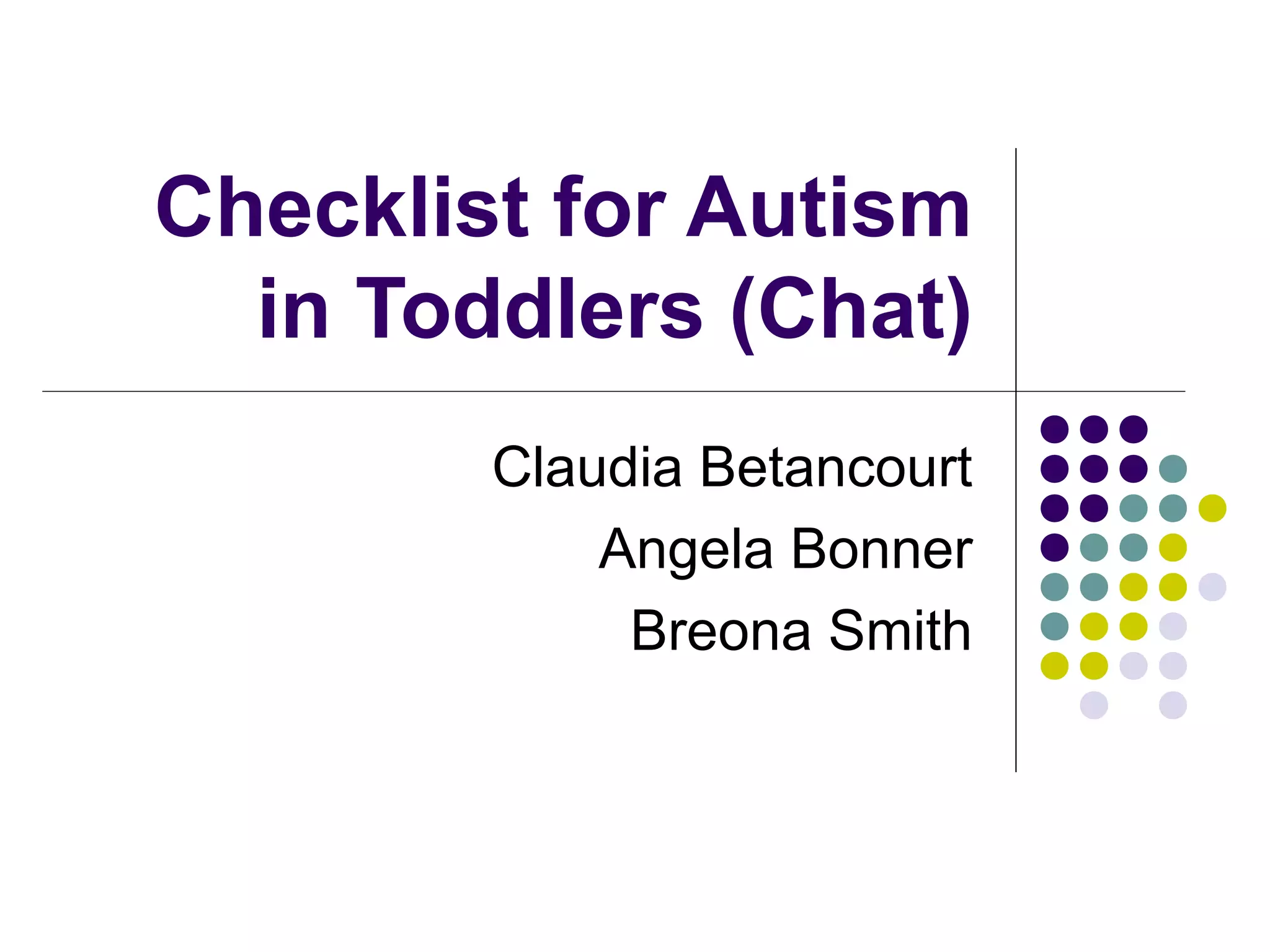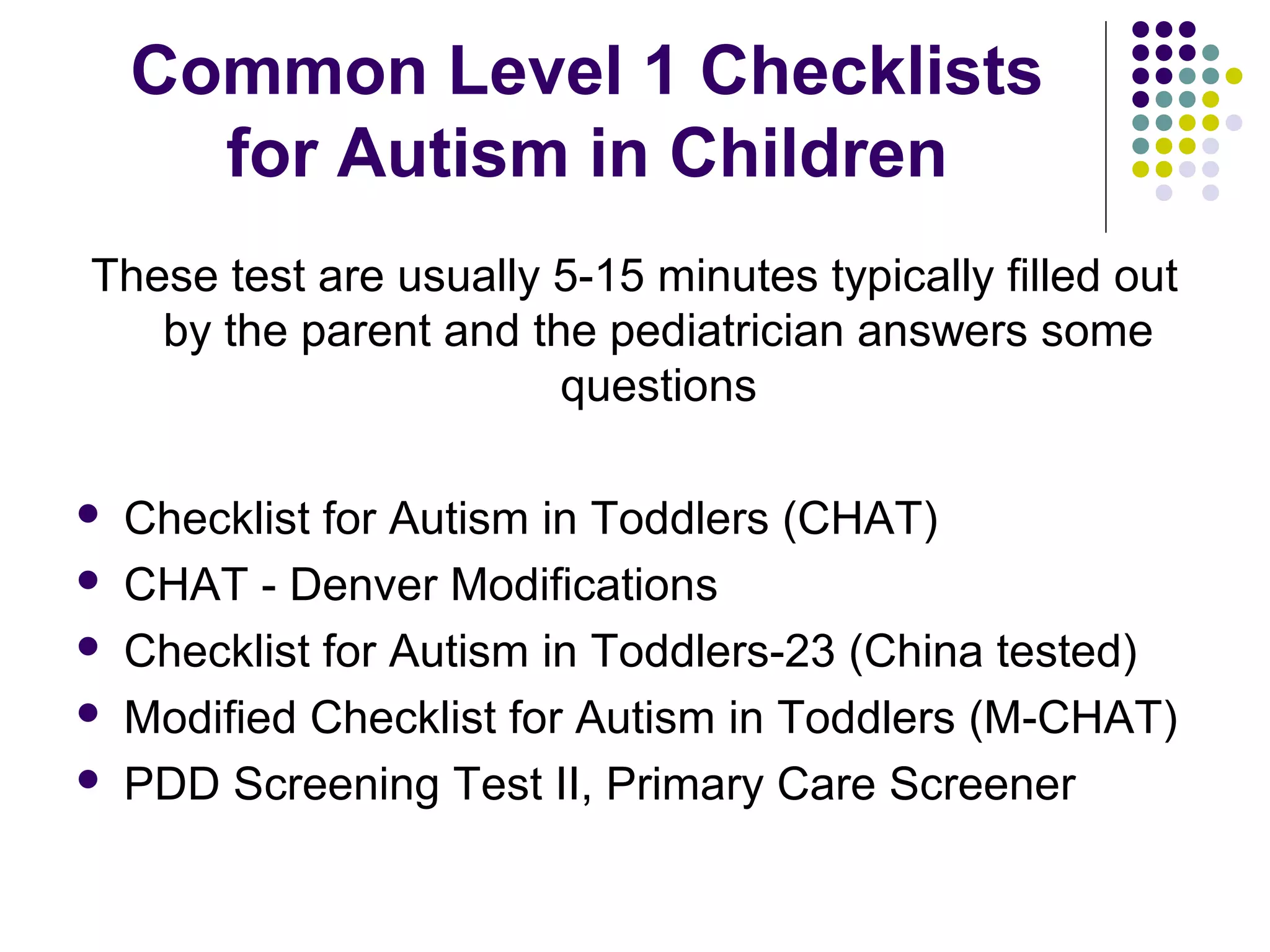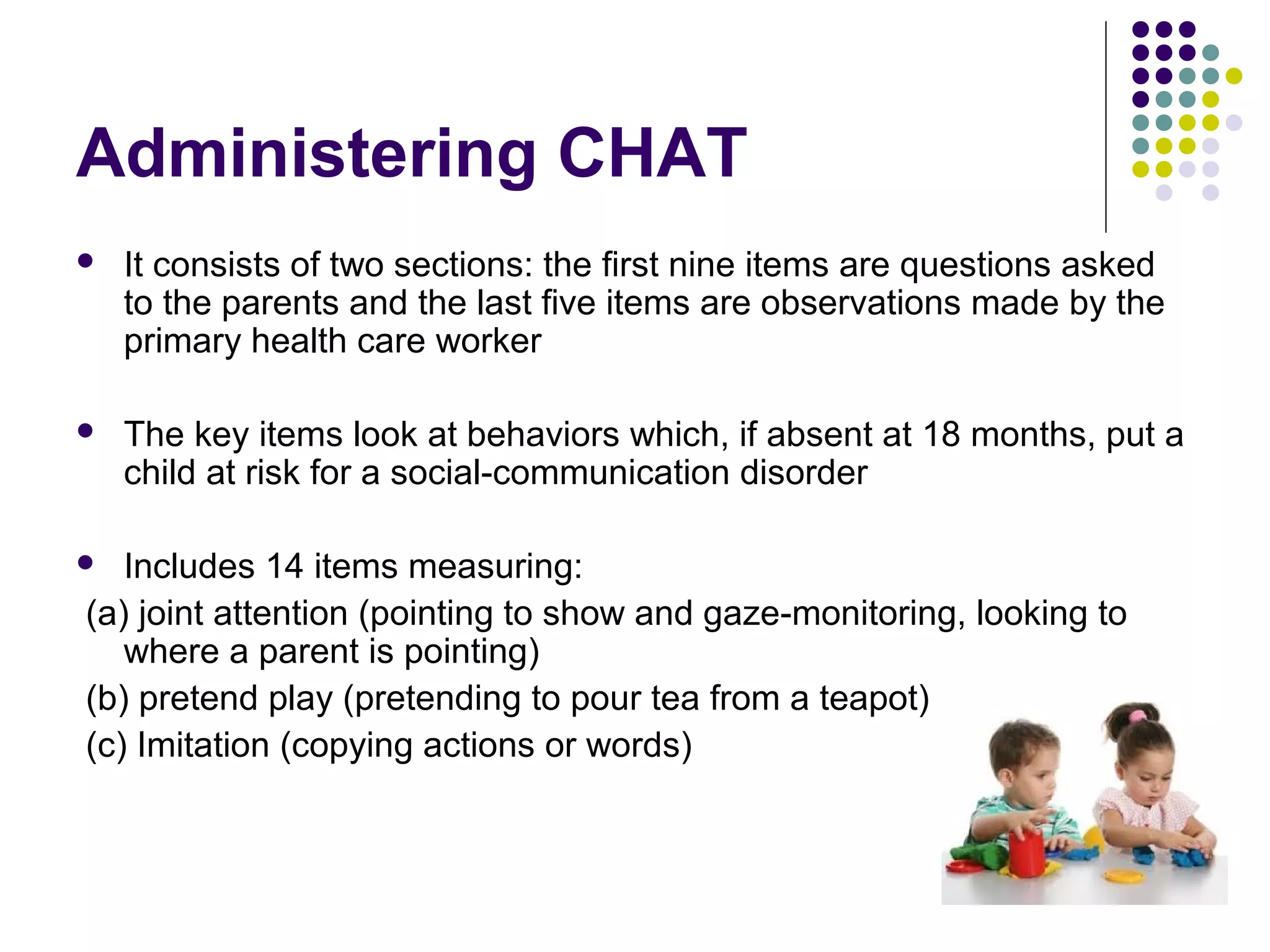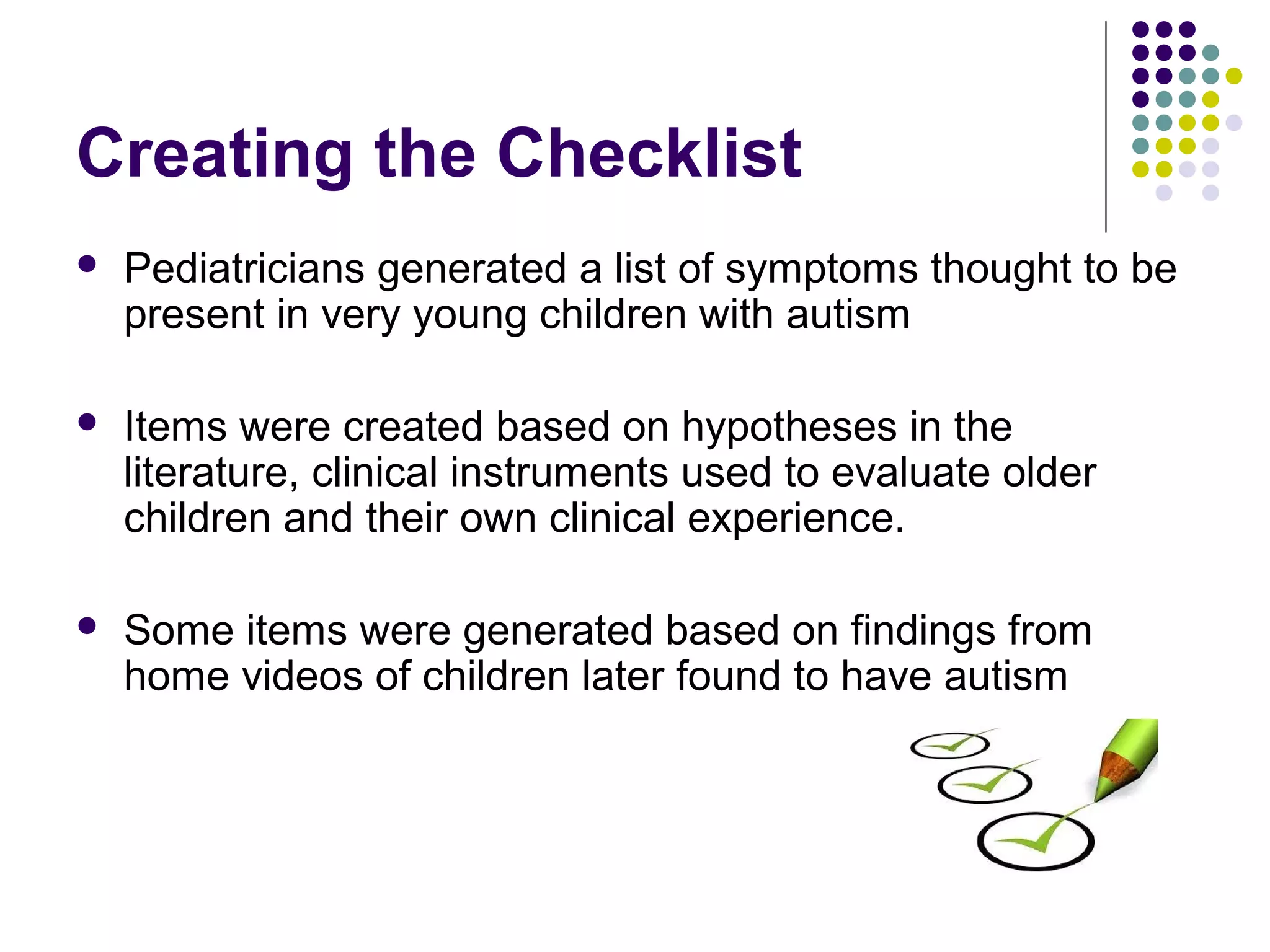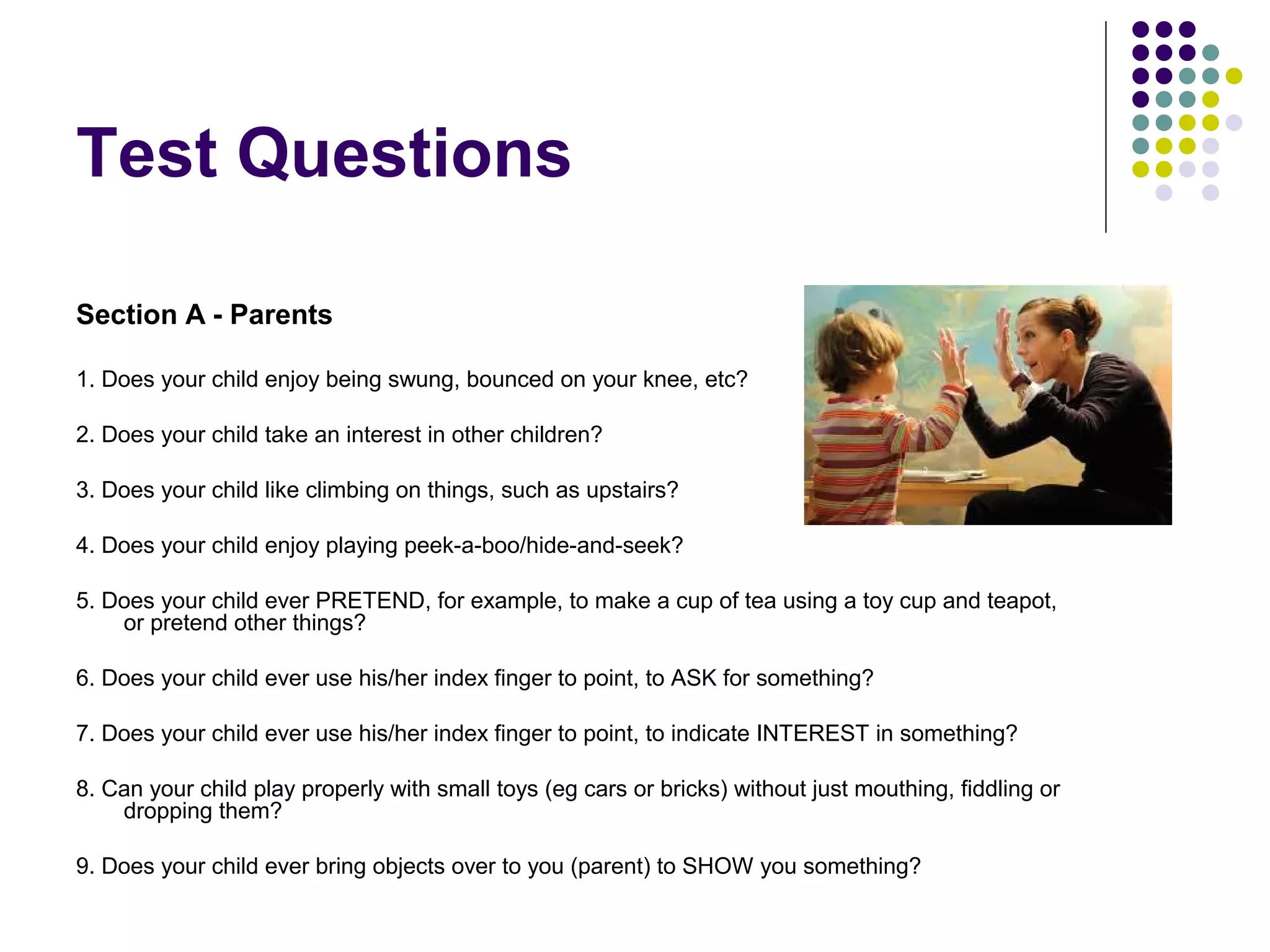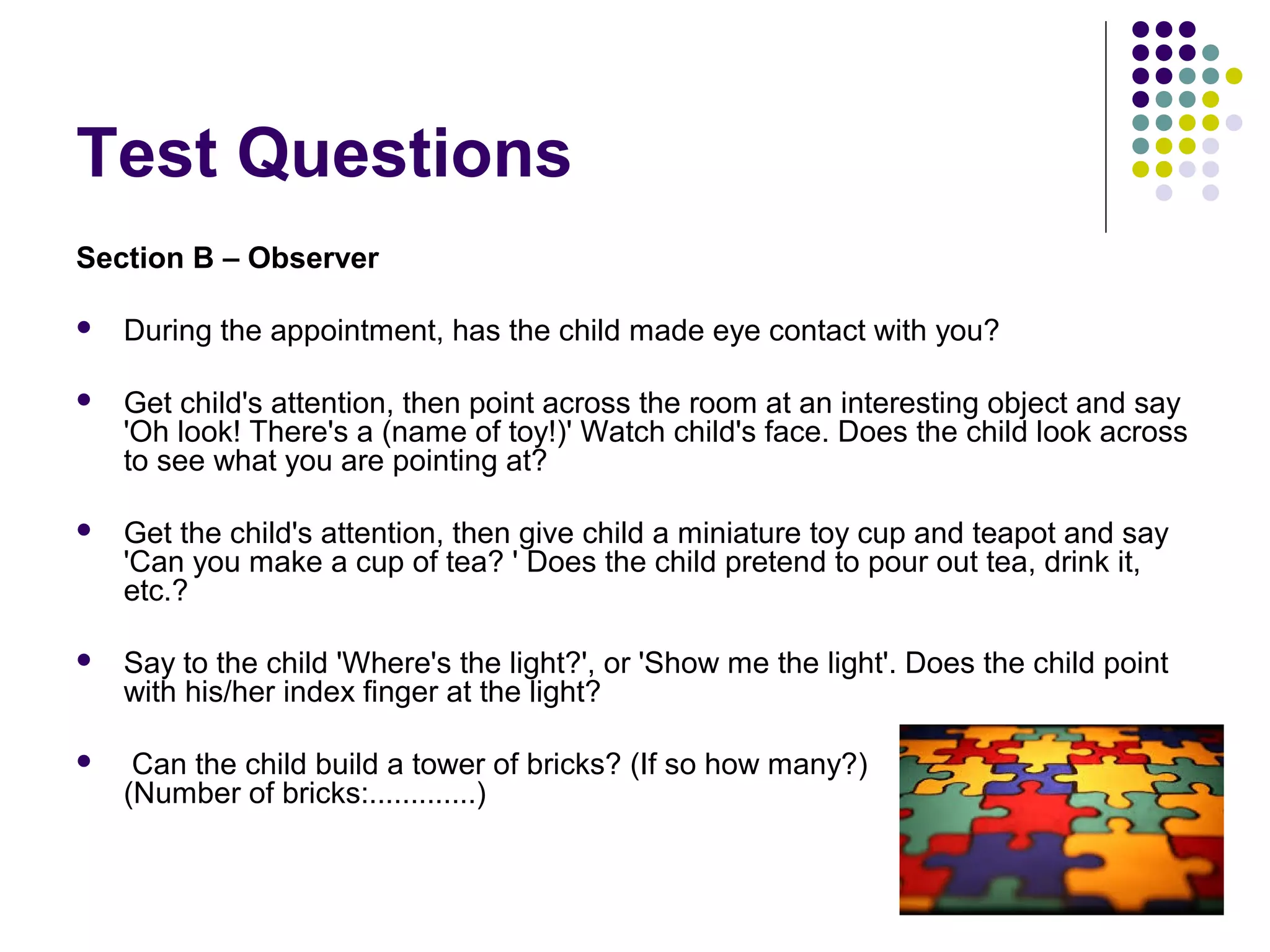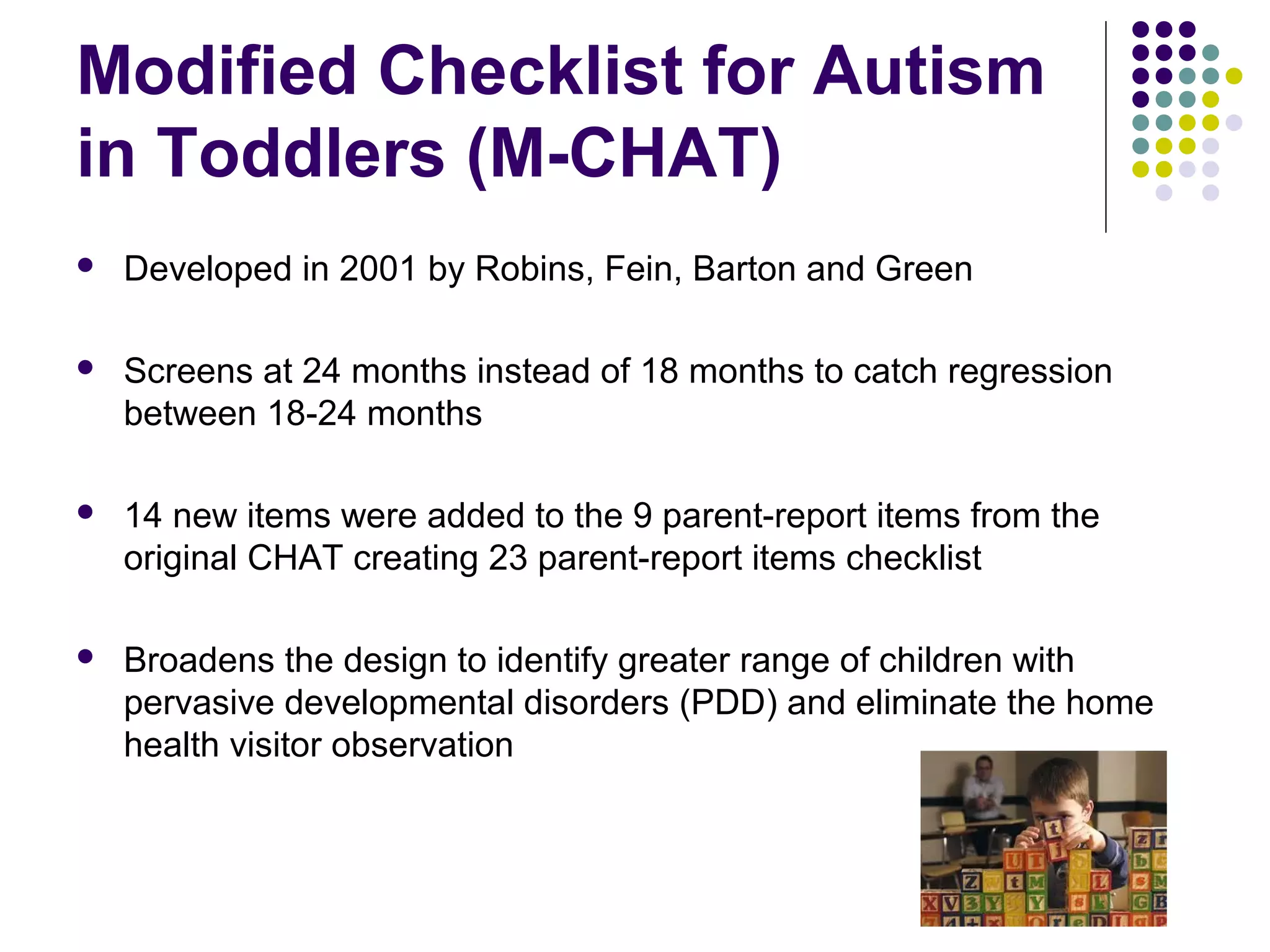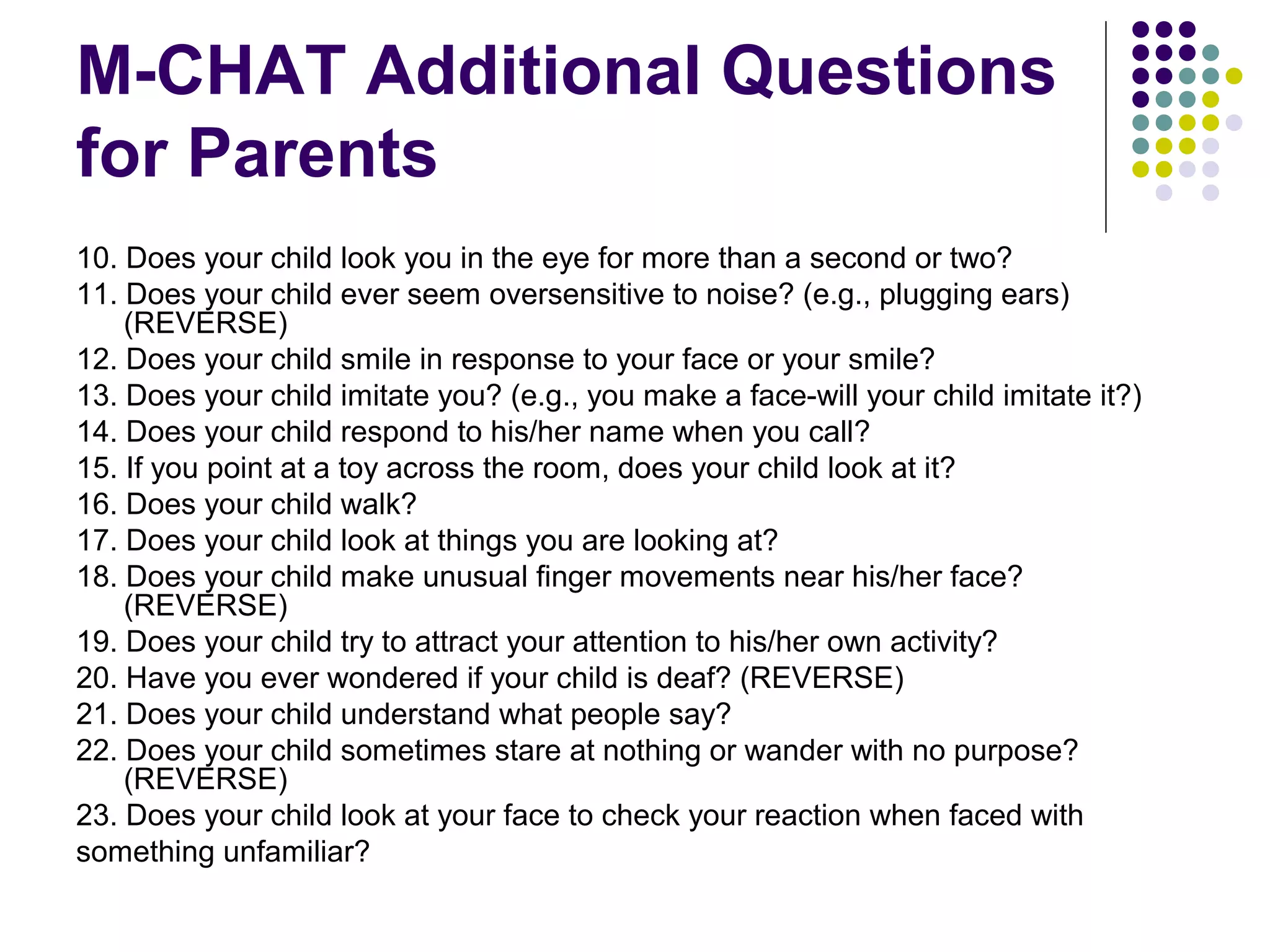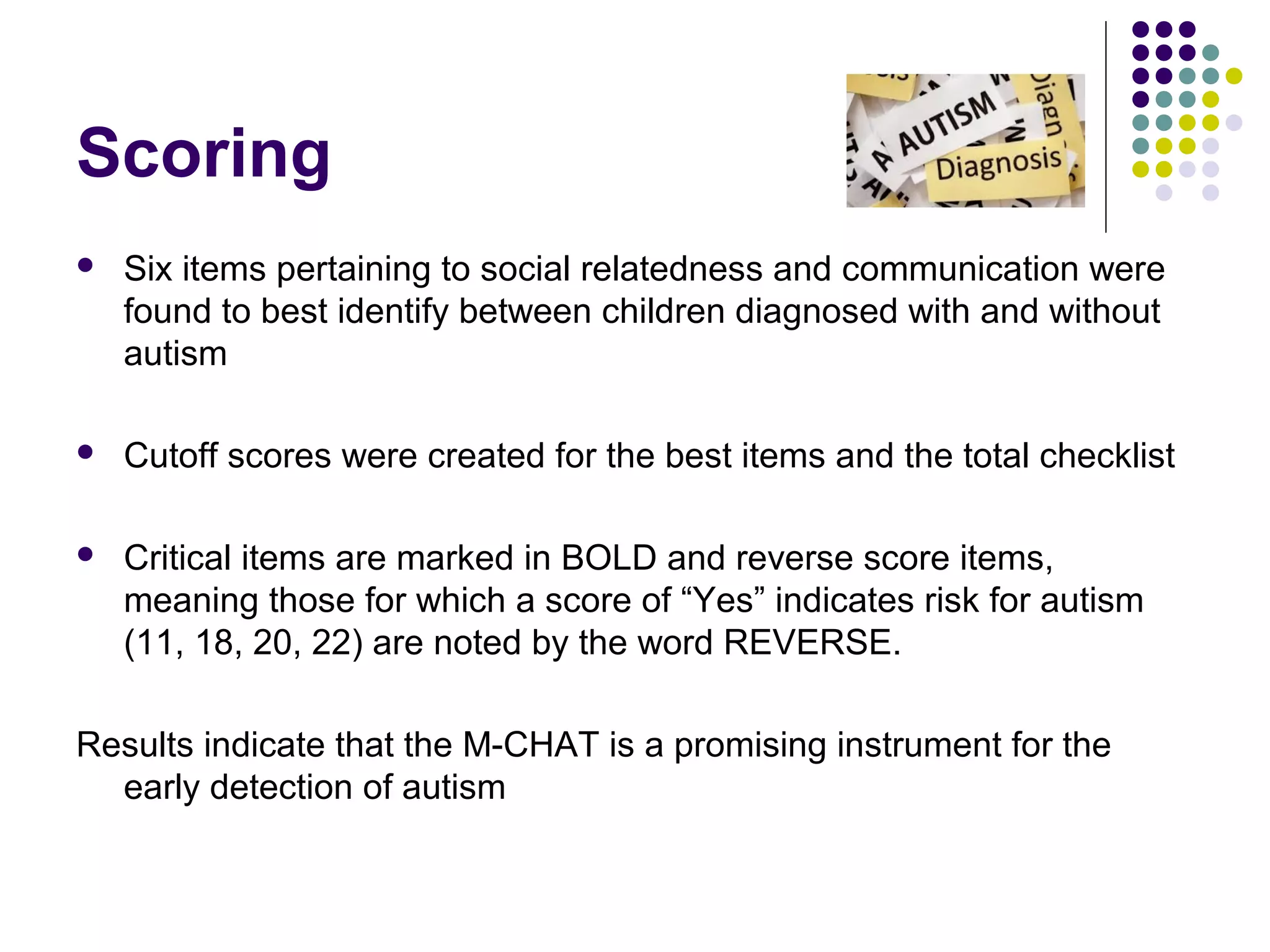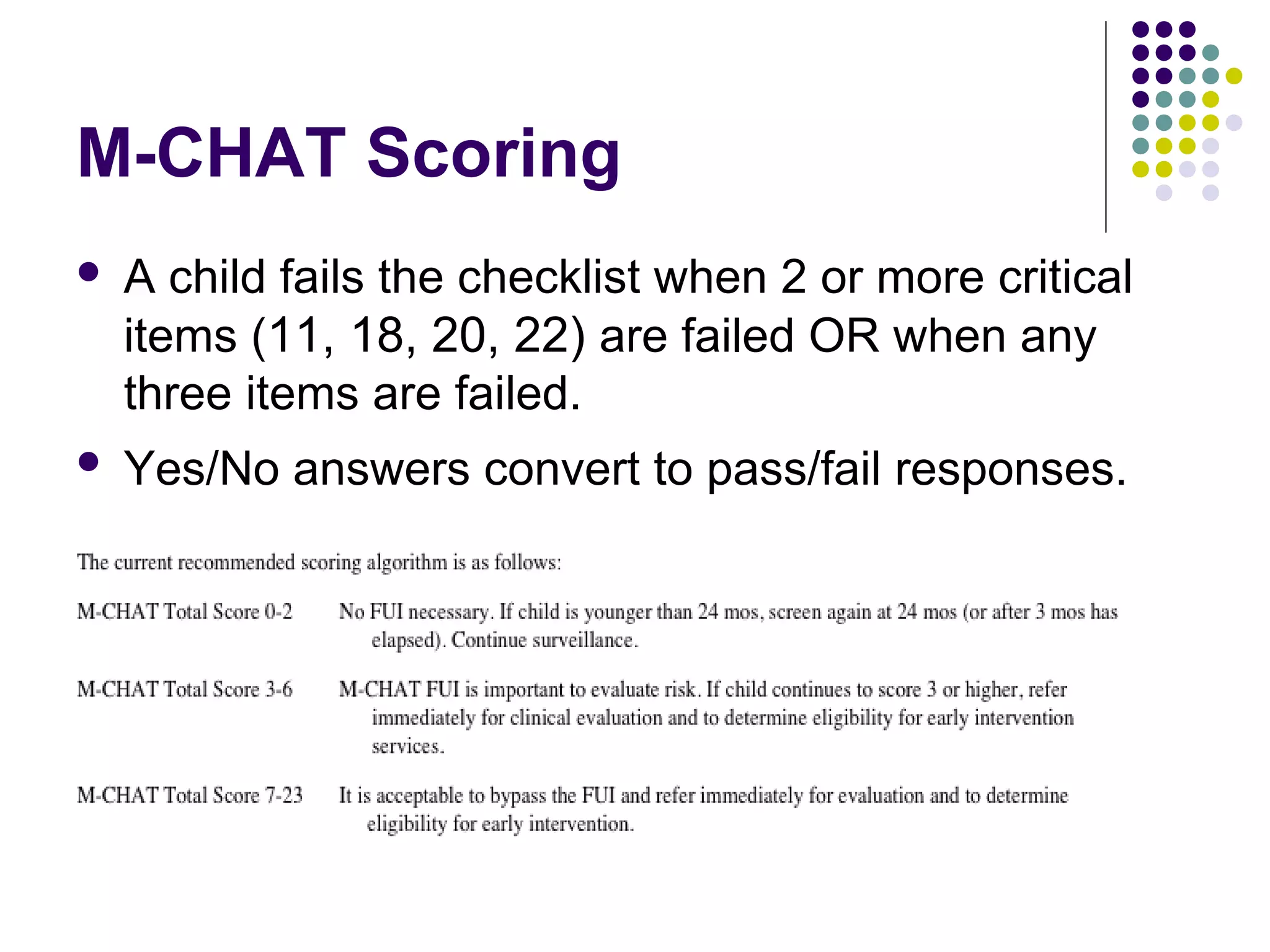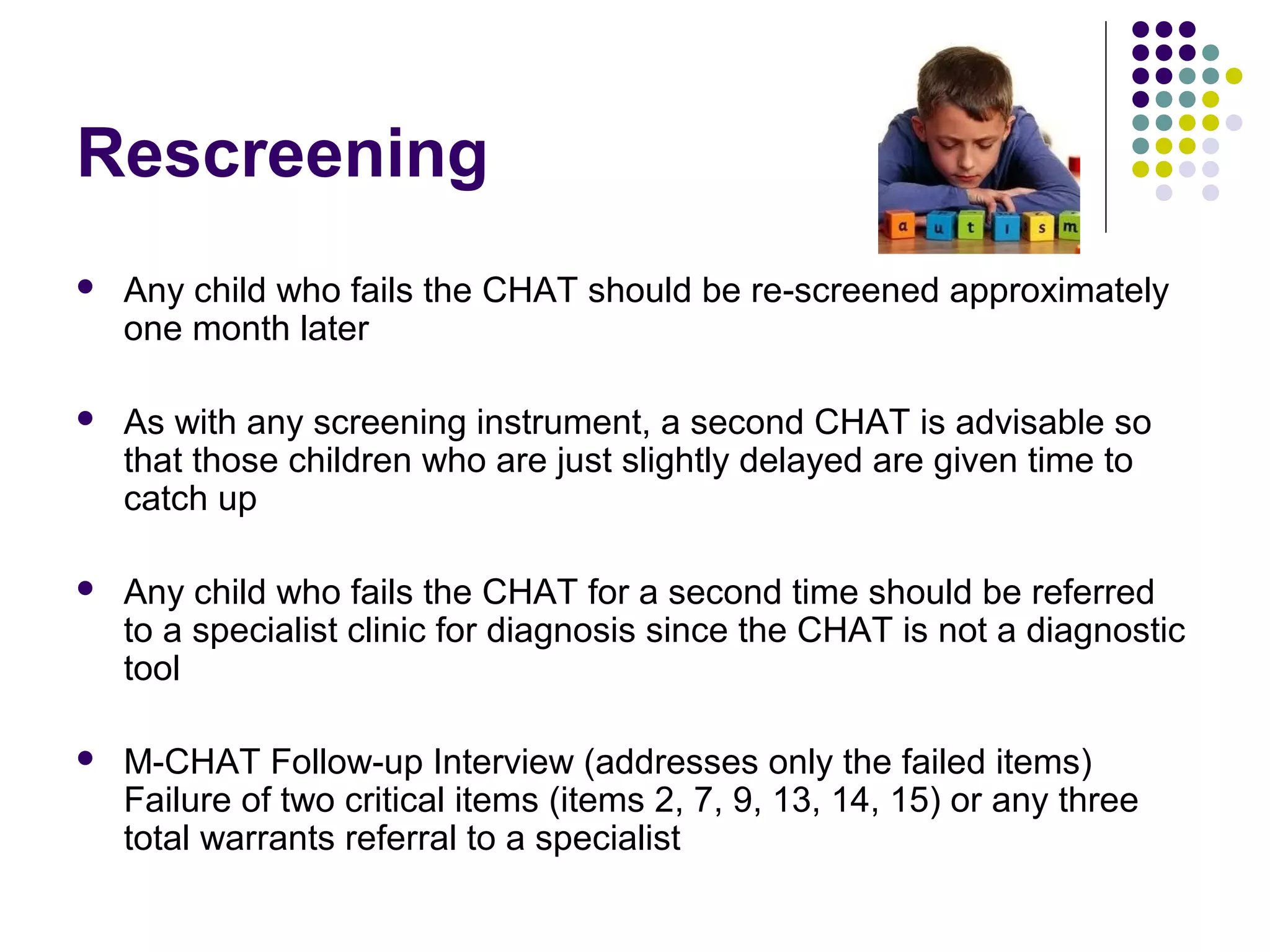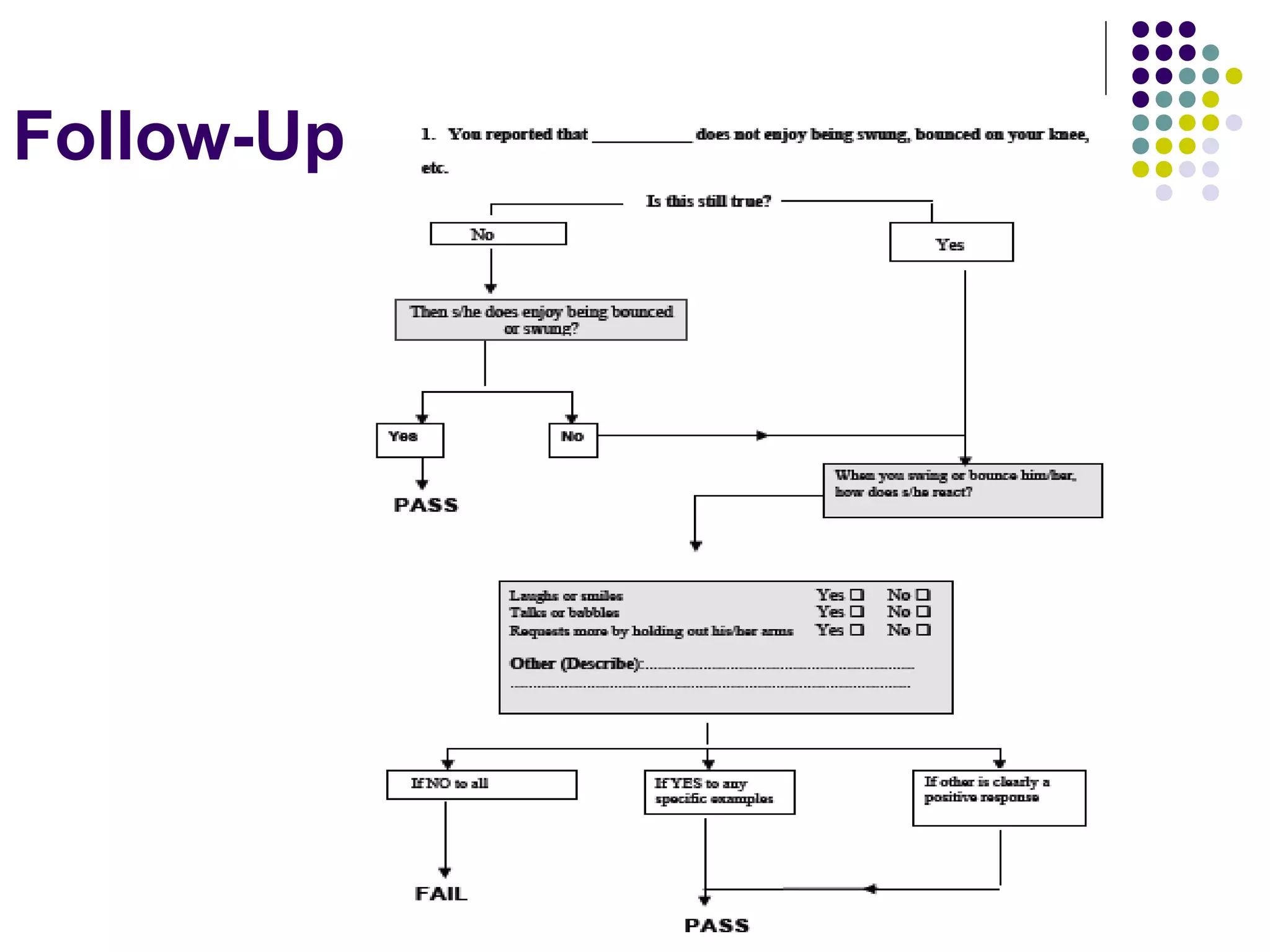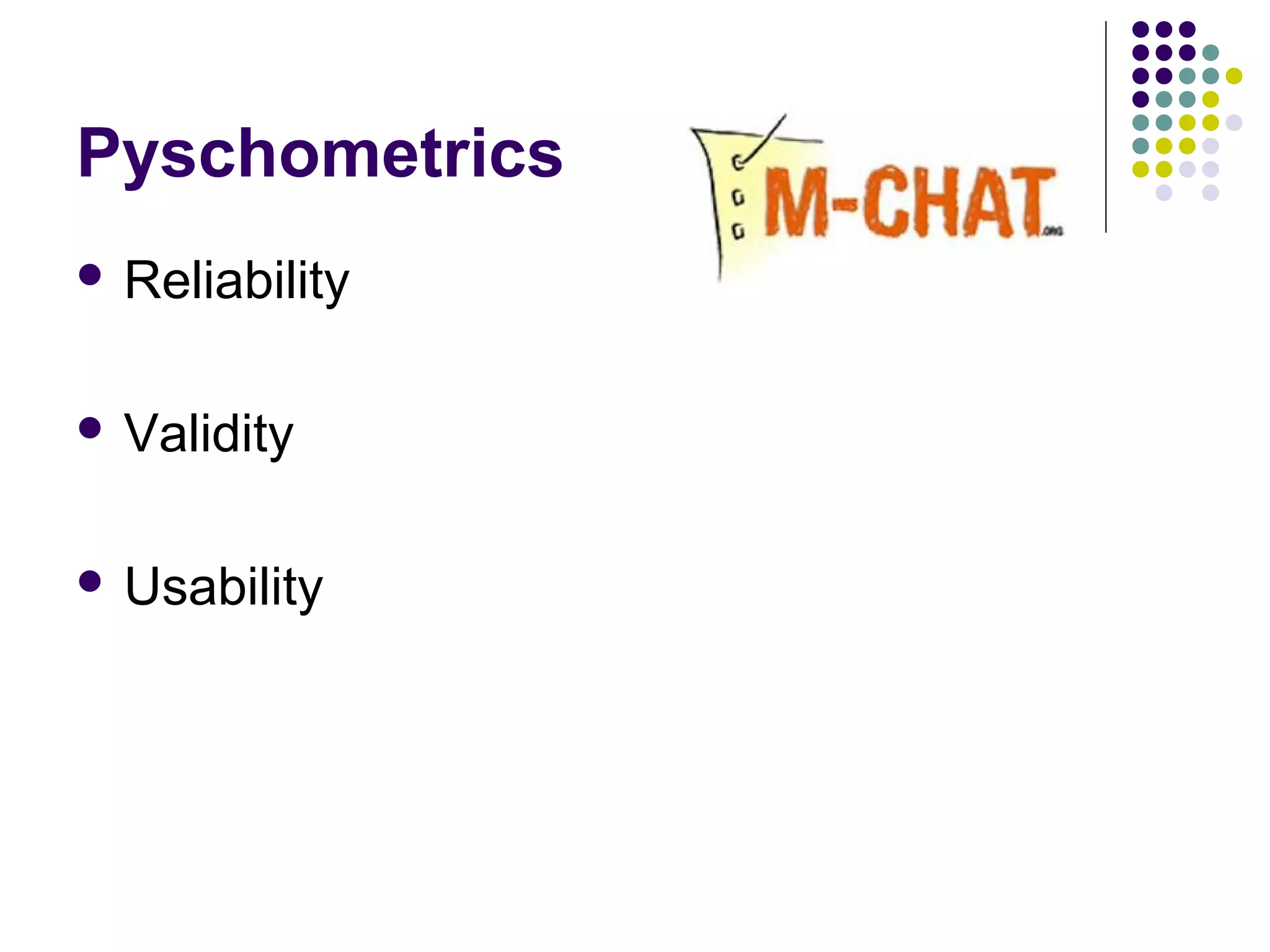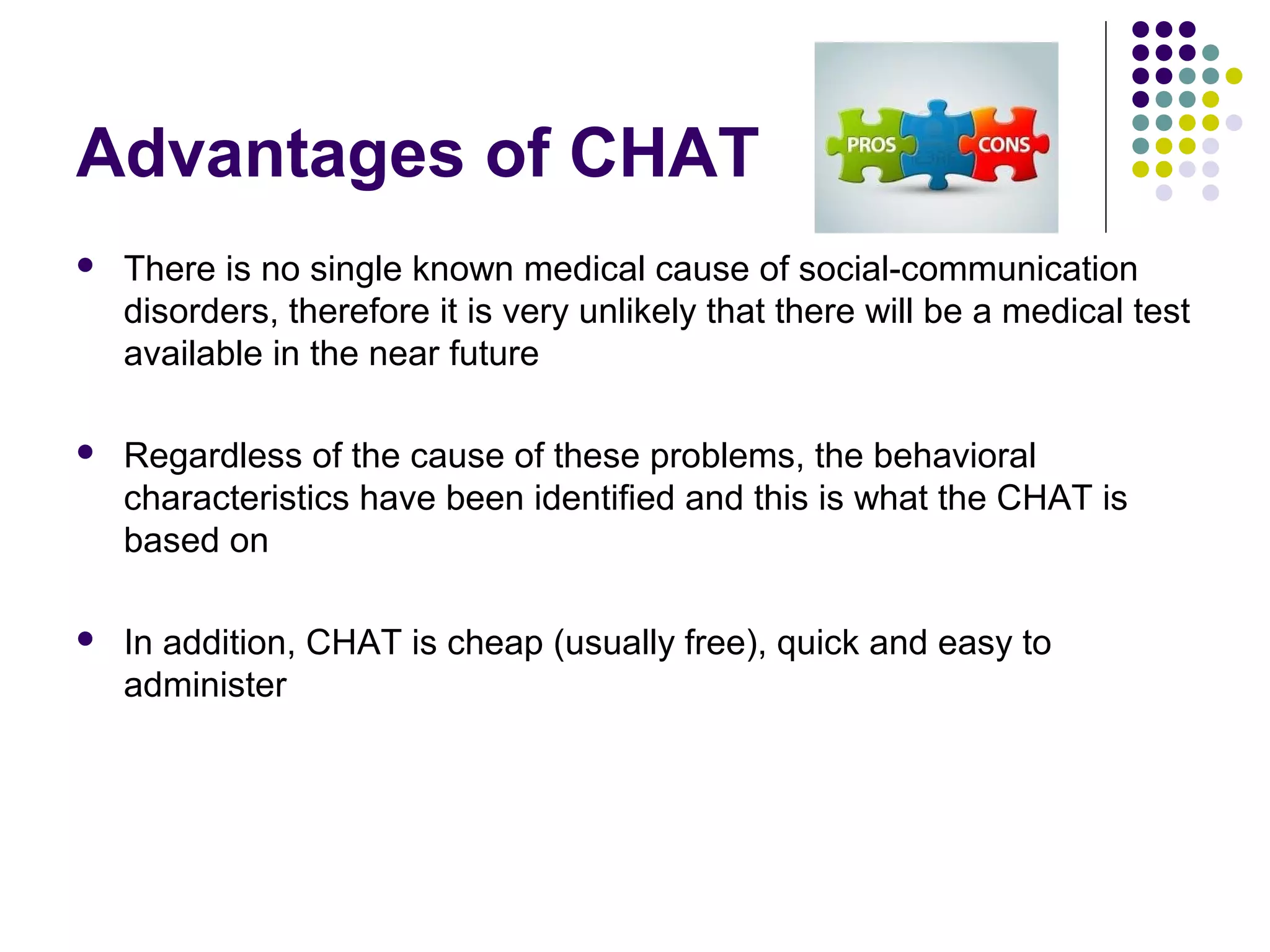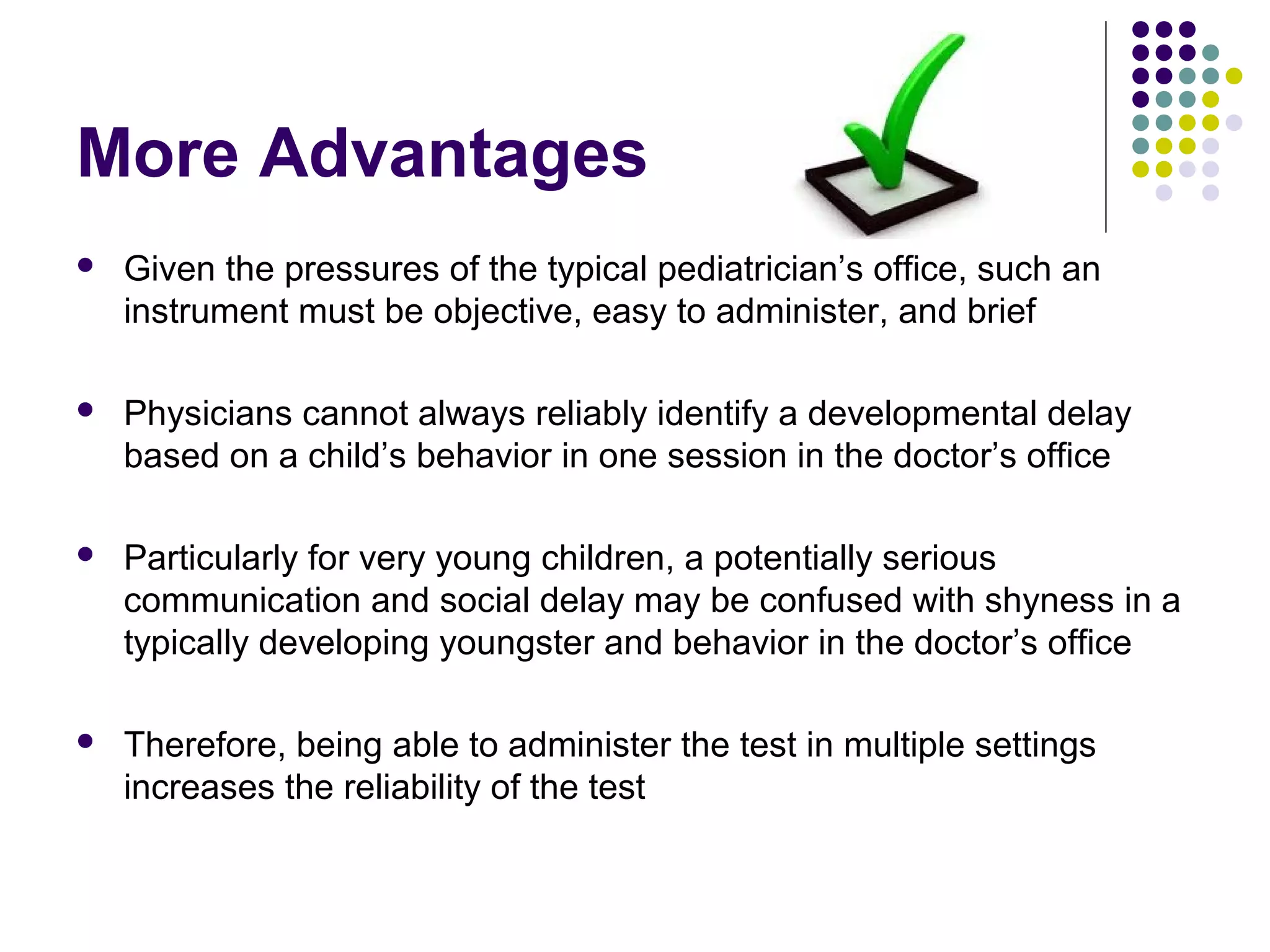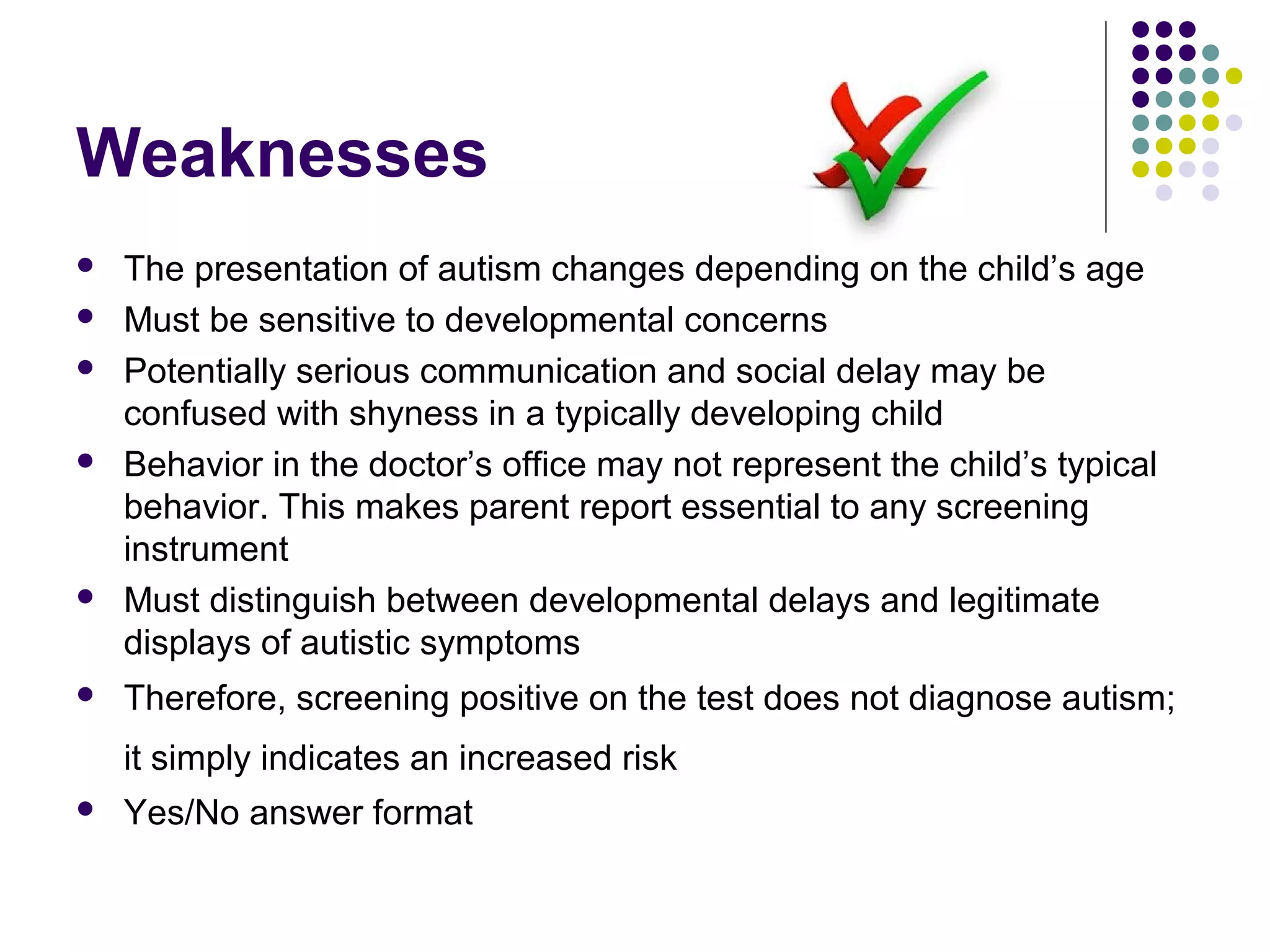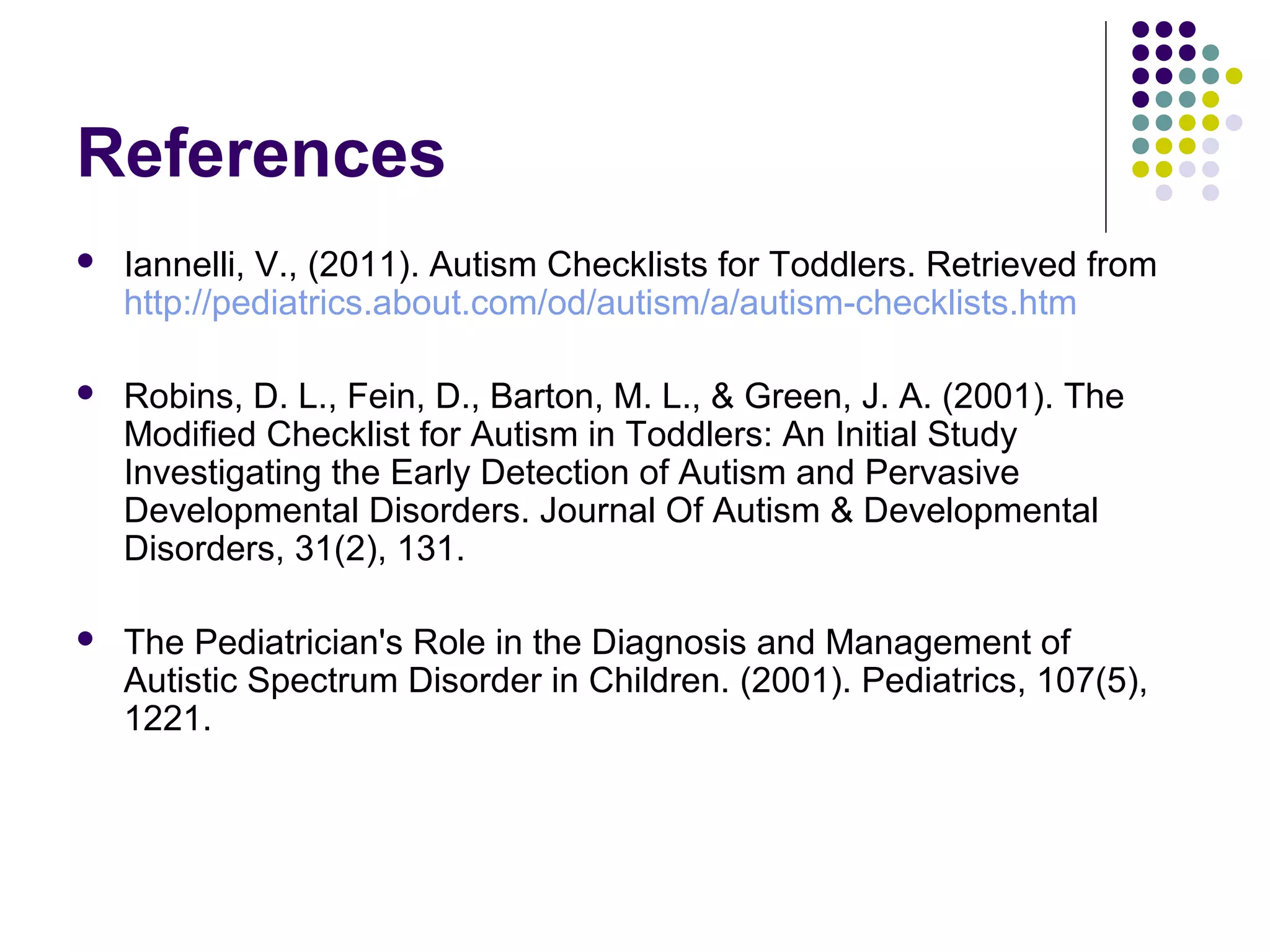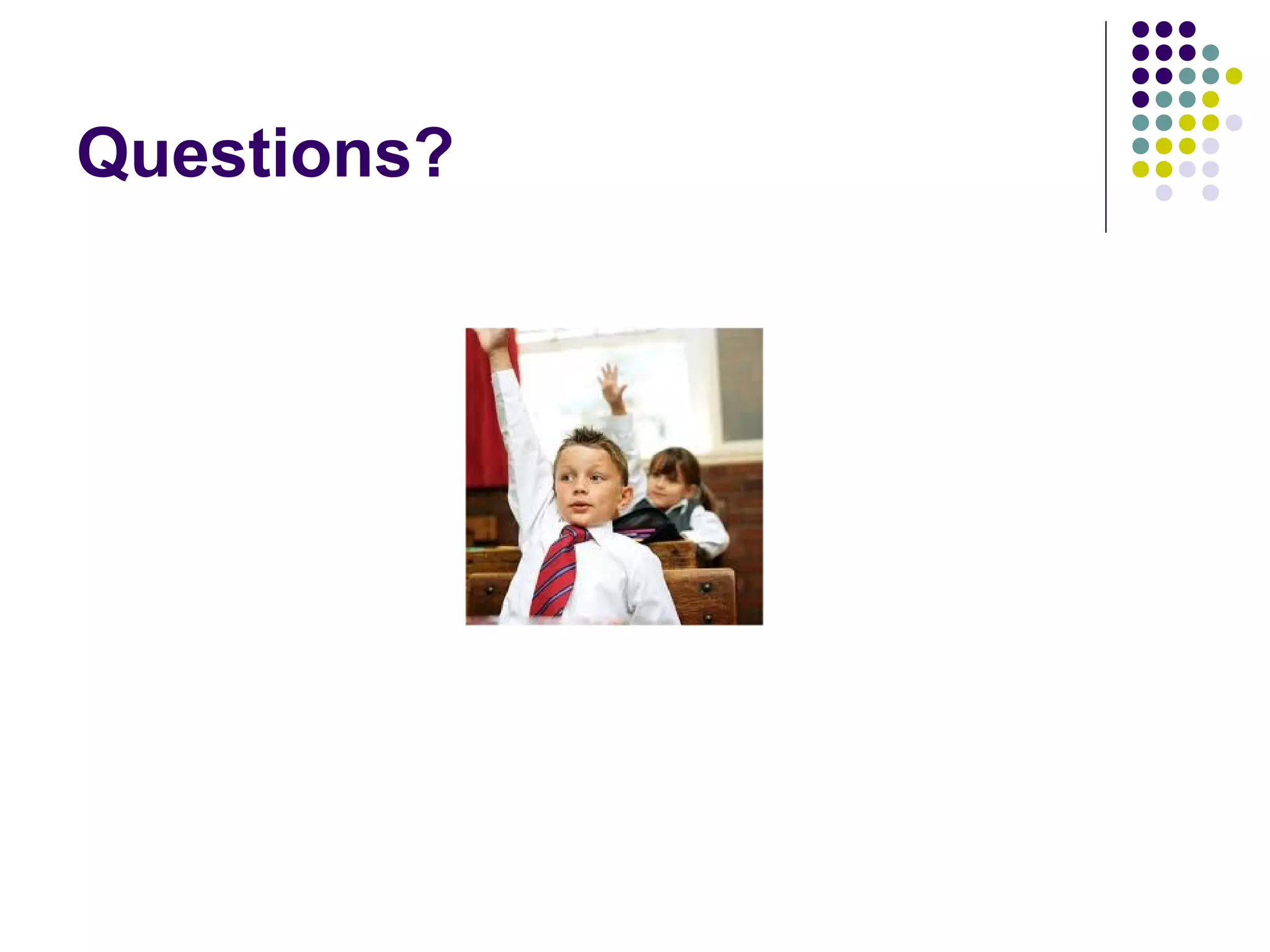The Checklist for Autism in Toddlers (CHAT) is a screening tool developed in 1992 to identify toddlers aged 18 months who may be at risk for autism or other social-communication disorders. The CHAT consists of questions for parents about behaviors like pretend play, pointing, and bringing objects to show others, as well as observations by a healthcare provider. The Modified Checklist for Autism in Toddlers (M-CHAT) was later developed to screen children at 24 months and add additional questions, screening for a broader range of disorders. Both checklists aim to identify children in need of further evaluation rather than diagnose autism and have limitations but provide an objective, quick way for pediatricians to assess early signs of social
